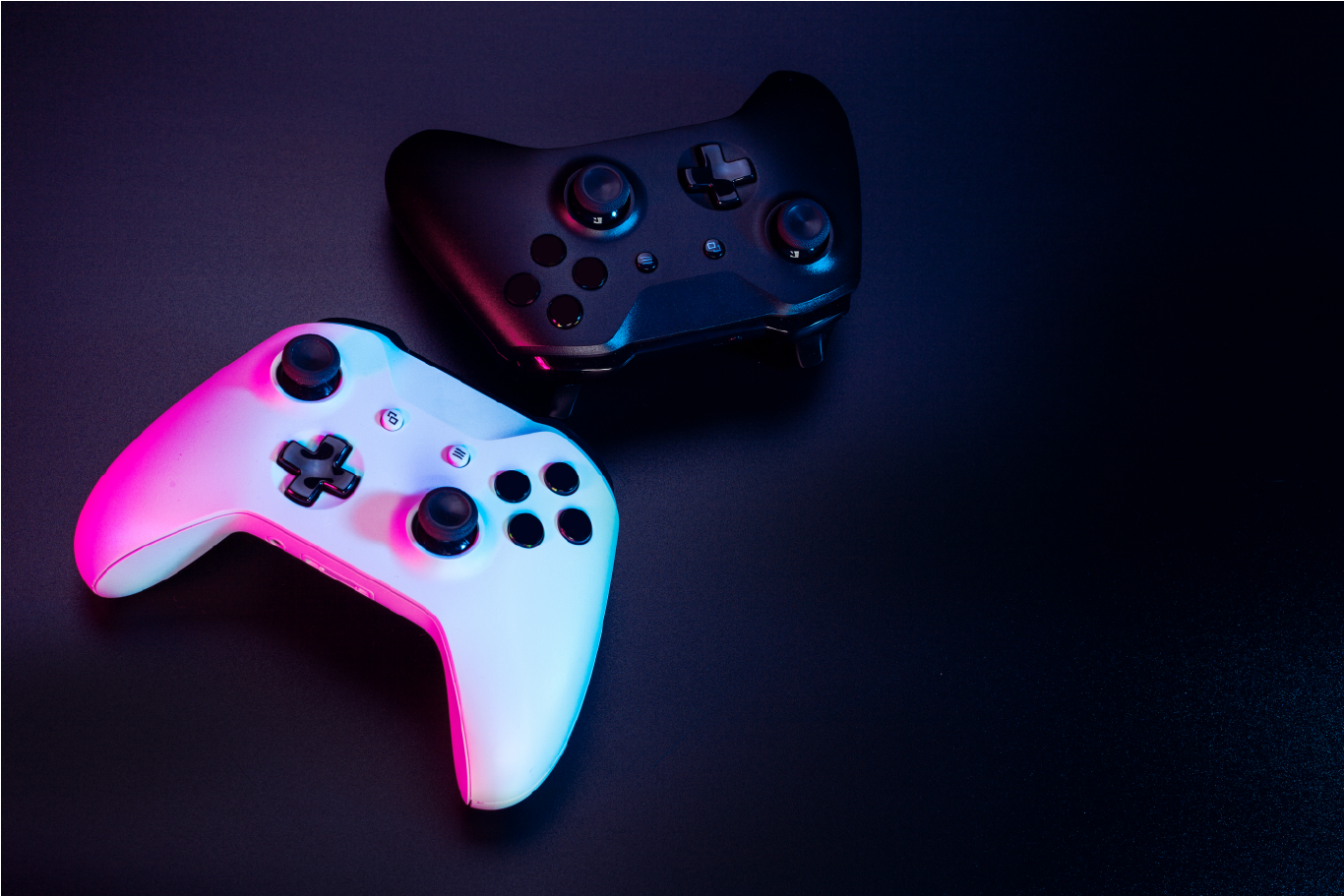Accessibility in video games has never been more important. As games have become increasingly popular, it’s important to remember to design for all of your users. By ignoring accessibility and possible accessibility settings, video game designers risk excluding many players and setting a poor standard. Furthermore, as the years have gone by, the increase in demand for accessibility to video games has become more apparent.
Industry leaders like Microsoft and Sony have developed adaptive controllers to enable gamers of all abilities to play video games in their way. These R&D products are helping shape the landscape of accessibility from a controller standpoint.
So, what can game designers and developers do to help create a more accessible experience from within the game itself?

1. Audio Disabilities:
Subtitles are probably the first thing you think about when considering accessible design for people with auditory disabilities. Subtitles are a popular accessibility option, but it is not always a simple solution with games. Sometimes it can be hard to read the subtitles and still interact with the gameplay.
So, subtitles should be large, use simple fonts, and contrast well against all the games’ different backgrounds. In addition, the subtitled words need to be condensed and not stretch the whole screen so a user can stay engaged with the game and not have to move their head like a typewriter when trying to read. The words also need to stay on screen long enough for a user to be able to read them, and it should be clear who is speaking when multiple characters are present.
Subtitles should cover all dialogue and sounds a player can hear so the player can understand what is happening, even if they can’t hear it immediately. Minecraft is a great example of this, allowing the sounds of in-game events to be indicated with a subtitle and a directional arrow to show you where it’s coming from. Ultimately, if a player is hearing impaired, providing audio that enhances and allows the player to enjoy your game is very important.
2. Vision Disabilities:
There are many visual disabilities and impairments that will require accessibility options. One common visual impairment is color blindness. People have either deuteranopia, which affects the perception of green tones, protanopia, which affects red tones, tritanopia, which affects yellow and, to a lesser extent, blue, and the very rare achromatopsia where you see the world in black and white.
Developers can check if their games are readable by testing with color blind players or using free filter tools such as color oracle, which allows you to see static images in all modes of color blindness, or Sim Daltonism, where you can see the world in real-time.
Similarly, game engines like Unity or Unreal Engine provide filters to allow game designers and developers to check these settings as they build the game. The best way to design around this issue is to avoid using color alone when providing information or distinguishing between two different things. Instead, designers should use shapes, symbols, shading, animation, and other visual tricks to make critical parts of the game stand out from one another. Providing key ways to distinguish between different elements in your video game is very important to a player’s overall experience.
3. Motor Disabilities:
More and more UX accessibility options have been developed to cater to people with various motor disabilities, such as Microsoft’s Adaptive Controller referenced earlier. However, designers and developers can also implement features that help players that don’t have access to accessible controllers with their own accessibility options.
For example, users can now fully remap controls to access any mechanic with any button or key. Most console games do not allow this, yet this is the most frequently requested accessibility option from games. Another great design method enables the user to different input methods if the game has fine motor movements such as a mouse or gyro, allowing those options to be turned off and accessed with one control or button.
Furthermore, reducing the number of buttons you use and making it easier to operate the game without needing to hold down or repeatedly tap a button is also a great accessible design option. Providing more granular customization for the player is important. For example, rumble has a huge impact on players with motor disabilities, and thus you should allow the player to change the rumble sensitivity. Lastly, the ability to pause a game is important for motor disabled gamers as they might need to take a break from playing because of fatigue or discomfort.

4. Cognitive Disabilities:
Many different types of cognitive disabilities require other design solutions within video games. Common cognitive disabilities recognized by video game makers include epilepsy, dyslexia, and learning disabilities.
Some of the key design features implemented to improve the playing experience of people with cognitive disabilities include:
- Options for how a player perceives your world, such as a Field of View (FOV) slider or Motion Blur slider
- The ability to turn off quick flashes or regular moving patterns
- Providing simplified information and objectives to players
- The ability to turn on navigation cues
- Access to play tutorials whenever for a quick refresher
- Implementing pause screens with information that reminds the player what they’re doing
- The ability to pause your game
- Fully customizable difficulty levels
Customization is Key
Providing options to the player is the key to being inclusive and accessible. Customization options within your setting allow players to have the freedom to enjoy your game in their own way and express who they are. Whether you allow a player to customize how subtitles look, remap controls to their liking, or turn off motion blur because it makes them feel nauseous, customization enables users to unlock an extra layer of potential within your game. From a design perspective, it’s a no-brainer!
One of the beautiful elements of video games is that they are interactive entertainment whose potential is dependent on how you approach them. This makes them uniquely different from most other forms of media. Options and customization allow players to tailor their experience and properly immerse themselves in your game. Remember to design for everyone. Test your designs with disabled players in all four categories before shipping your game to ensure the best overall experience for all players.
Want to Learn More About Accessibility in Video Games?
Awareness of accessibility in video games has grown in recent years thanks to the efforts of a number of organizations, individuals, and advocates. There are many great places, particularly online, where you can learn more about accessibility for video games and keep up to date with recent accessibility developments.
We recommend checking out this Youtube Playlist from the Game Maker’s Toolkit that features a number of videos all about video game accessibility.
You should also watch the Video Game Accessibility Awards, which take place annually, and were founded by Able Gamers senior director Steven Spohn and Sony Santa Monica writer and Youtube personality Alanah Pearce. The awards show, which is streamed live on Youtube, is a great place to learn about and recognize the video games that are succeeding with UX accessibility in video games in recent years.
To learn more about UX accessibility for video games, please get in touch with our UX experts.


